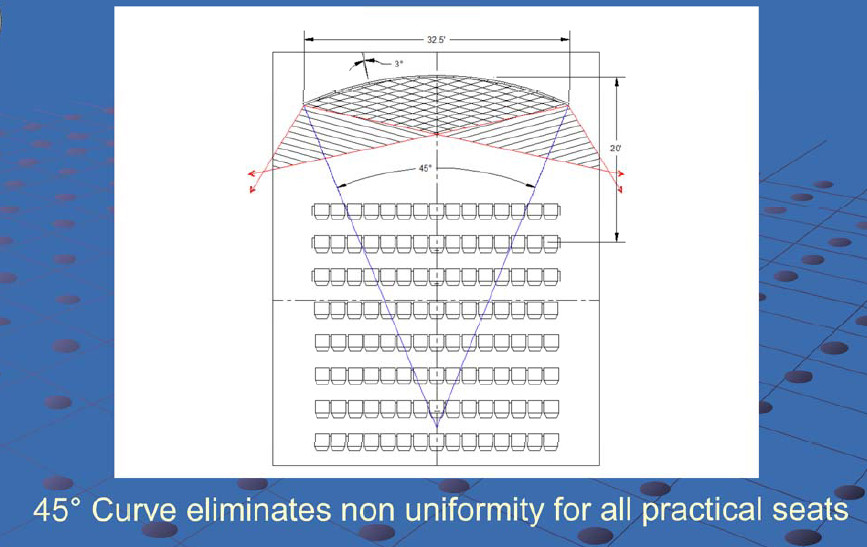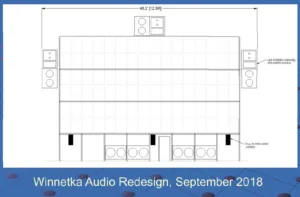About 75 Display Summit attendees came to the bonus session at the Pacific Winnetka theater, home of the first commercial Samsung Onyx LED theater in the US. The session was kicked off by David Richards or Moving image Technologies (MiT) who was the overall system integrator for the installation.
Their education on the product started a year ago and culminated in the installation at Winnetka last April. He then reviewed some of the screen specification like 4K resolution, 96 cabinets, 2.5 mm pixel pitch and a weight of 8000 pounds including the frame and speakers. The system requires six 20A circuits for the LED plus more for the audio and server. No additional work on the HVAC system was needed and there is a three-level catwalk in the back for rear servicing. Some modules were lost during assembly, but none since.
The audio system was redesigned in September to add the horns and move the left and right channels to the side of the screen. Such a position will not always be available in theaters so a custom audio design may be required for each theater. Fill speakers were also added below the screen to help with the sound in the first few rows.
Richards noted that the LEDs are not Lambertian emitters so there is some non-uniformity with viewing angle. For a flat screen, that results in the edges of the first few row possibly having marginal image quality. As a result, he recommends considering installing a curved screen, as is often done with gain-based projection screens, to minimize the viewing angle issue. A mild 30-degree curve is fine, but 45-degrees is even better. This curving concept can even be extended to a curved elliptical screen for a novel and immersive viewing experience.

Next up was Nick Conti from Samsung Electronics. This was an audio demo using a 6-minute clip from the movie “Mile 22.” Attendees were invited to sit in the back and in the front while Conti turned on the new audio configuration and processing vs. the original design with the three speakers on top and no de-elevation technology. The un-process design clearly created a sound field that was high with voices coming from the top of the screen and poor coverage in the front rows. The new speaker positions and processing fixed the issues quite well. Content for this sequence was all SDR.
ColorFront’s Bill Feightner then showed a number of HDR clips that showcased how their processing engine can transform HDR or SDR content to another version of SDR or HDR content. This was particularly effective in A/B and side-by-side images showing the SDR version and the HDR version. The daylight scenes were dramatically different with the nighttime scenes mainly bumping up highlights like street lights.
This was followed by W. Thomas Wall from LightView providing some commentary over clips from a Netflix movie called Meridian. The contrast in these scenes was spectacular and the cave sequence was probably unique for all attendees. The main character is in a cave and all you see is his flashlight. With the true black screen and a dark theater, it was like actually being in the cave.
Jerome Dewhurst and Bryan Mcmahan from Roundabout, a local post production house in Santa Monica, then talked over some clips from the first full length movie now being graded on the 2K Onyx screen in their facility. Called “Awaken”, this documentary-style film features clips from around the globe showing festivals, time-lapse nature, drone sequences and more. This was an incredible finale to the content shown with some really outstanding scenes with stunning colors and dynamic range.
These clips demonstrated the true potential of an LED cinema screen with outstanding images and sound. And, all the HDR clips were graded to a peak white of 300 cd/m², which was quite sufficient given the deeper black levels and crispness of the screen overall. – CC

